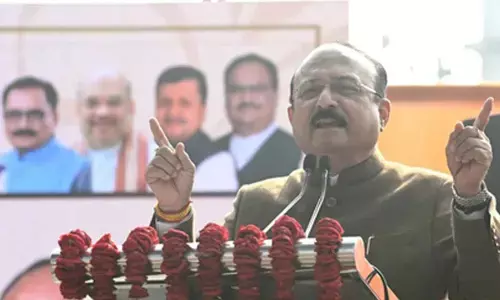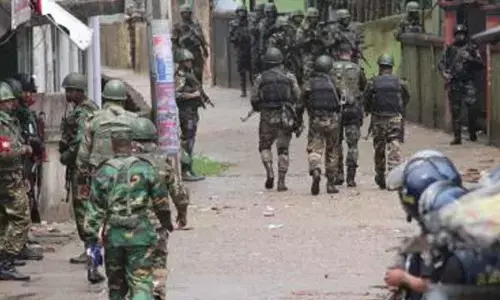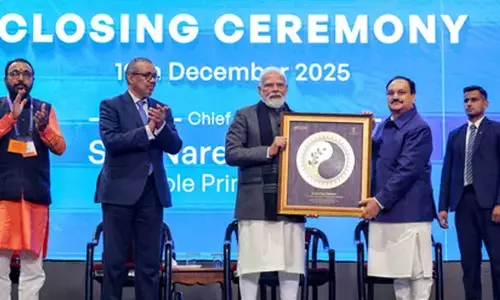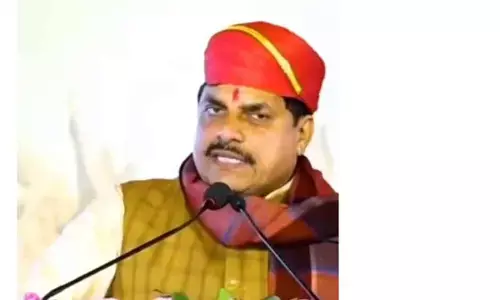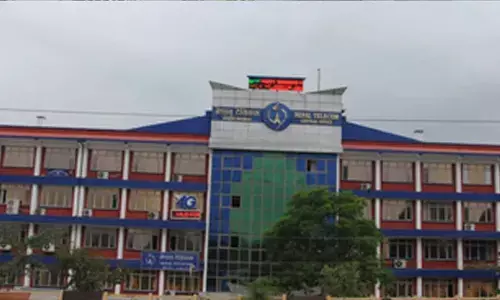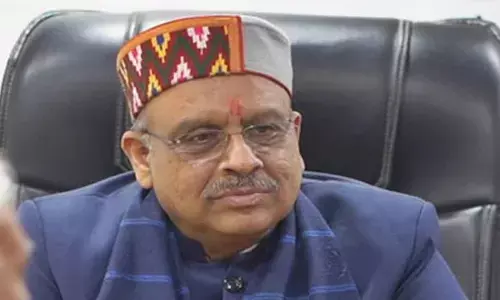Damerla paintings cry for attention

Close to 100 paintings, all dating back to over a century, of renowned artist Damerla Rama Rao are in a sorry state and need immediate restoration before they are lost forever for art enthusiasts and lovers of art in Rajamahendravaram and other parts of India. The paintings are invaluable for the quality of work and intensity.
Rajahmundry: Close to 100 paintings, all dating back to over a century, of renowned artist Damerla Rama Rao are in a sorry state and need immediate restoration before they are lost forever for art enthusiasts and lovers of art in Rajamahendravaram and other parts of India. The paintings are invaluable for the quality of work and intensity.
The government sanctioned Rs 12.34 lakh to restore two oil paintings and 22 water colours that are eight decades old, but the administrative sanction is yet to be given. AP State Co-convener, Indian National Trust for Art and Cultural Heritage (Intach), Seshu Kumari, observed that mere restoration of some of the valuable paintings is not enough and said that all the paintings should be restored which my cost around Rs 1 crore. She lamented that the government as well as the people’s representatives were not showing enough interest to restore these paintings. She wondered why the MPLads funds were not being allocated for this work.
She said the local artists may be given opportunity to restore the paintings along with the artists from New Delhi of Intach. B R B Achary, principal, Damerla Rama Rao Government Art Gallery, said that some of the paintings are in dilapidated condition as the canvas used is a century-old and needs restoration.
Damerla Rama Rao is counted as one of the most famous painters the country has produced probably after Raja Ravi Varma. He is one of the first Indian artists to paint nudes at a time when orthodoxy was at its peak in society. He played a crucial role developing painting during the time of revival of art in India.
He broke the shackles of contemporary orthodox society of the country at that time by painting nudes. His revolutionary nude paintings were on a lady named Nakula. He depicted the freedom of women, important events in mythology, serenity and artistic glory of India, inevitable event in human’s life like death, innocence and historical events in his painting.
Though Damerla Rama Rao died young at the age of 28, his paintings are considered of high quality. Such was his proficiency that Rao with his father went to Sisil N Burns, who was the Dean of JJ School of Arts in Mumbai in 1916. The sketches of an untrained, unexposed Rama Rao surprised and impressed Burns which resulted in his admission directly into the third year of fine arts course.
His works were composed, decorative in nature and always compared to those of Puvs de Chavannes, the post-impressionist artist of Paris. Rama Rao was spotted by Sir O J Couldrey, principal of the Government Arts College, Rajamahendravaram, who took him to Ajanta and Ellora for sketching the frescos and sculptures.
It is said that Viceroy Lord Reading was so impressed with Rama Rao’s works that he purchased the painting Godavari of Eastern Ghats. After purchasing the painting, Lord Reading said in a lighter vein, “See I am purchasing a Swadeshi painting when Swadeshi movement is in full swing”.
Rama Rao was intensely inclined towards the art of painting and sketching since childhood. In 1923, Rama Rao started Rajahmundry Chitra Kalashala and trained many youngsters. Some of his world-renowned paintings like Siddartha Ragodayam, Pushpaalankarana, Kaartika Pournami were exhibited and won prizes not only in Delhi, Mumbai, Calcutta as well as London and Toronto.
He sent his paintings, Rushya Srunga Bhangam and Turpu Kanumallo Godavari to the exhibition organised by the Oriental Society. The Viceroy of India award was conferred on Rama Rao for his former painting and the latter was purchased by the then Viceroy of India Rufus Daniel Isaacs.
The Damerla Rama Rao Memorial Art Gallery established in Rajamahendravaram contains many of his pieces that were found or donated, including his 14 oil paintings, 76 water colour paintings and 442 pencil sketches along with 134 painting made by his wife Satyavathi, 378 paintings created by his contemporary Varada Venkata Ratnam and 34 other paintings.
He created a painting called ‘Death’ on the train on way back to Rajamahendravaram from Tirupati. At that point of time, he was affected with smallpox and died in 1925 without completing his last painting, Deat’.









